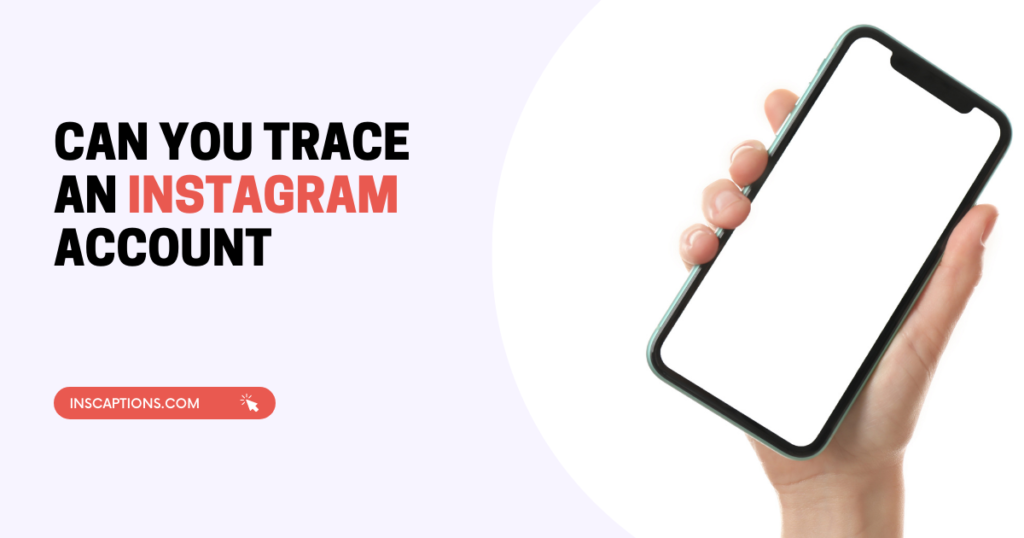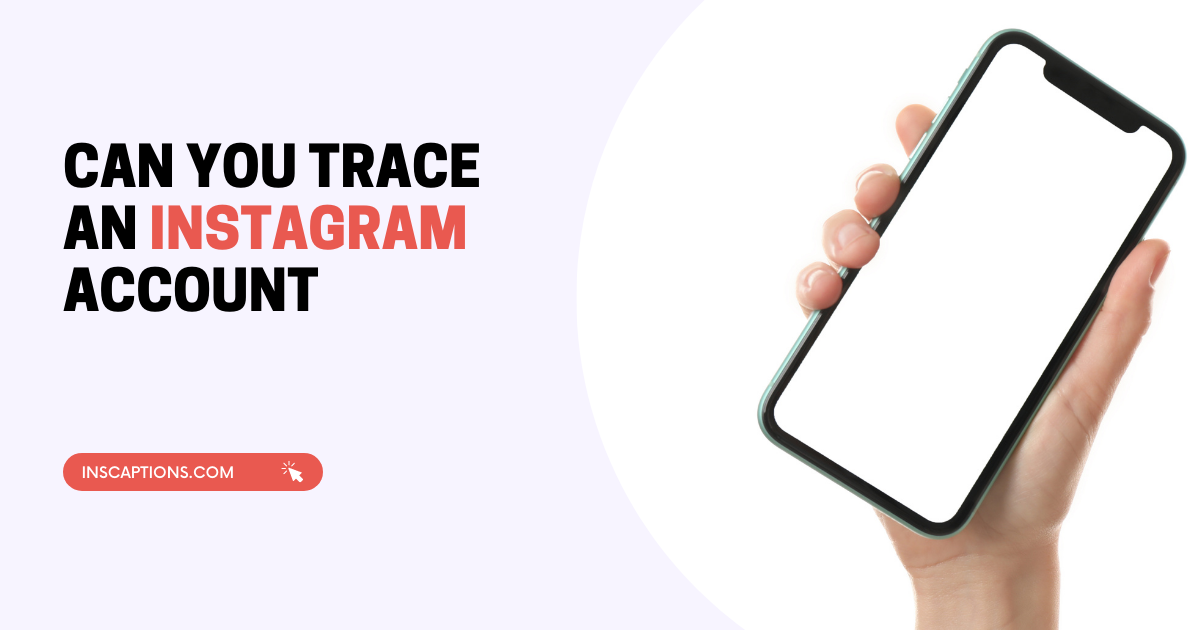Are you curious about whether you can trace an Instagram account? Well, you’ve come to the right place.
As an Instagram specialist and professional editor, I’ll walk you through the ins and outs of this intriguing topic. Privacy and security on social media platforms are crucial.
So understanding how Instagram accounts can be traced is essential for protecting yourself and others. So, let’s dive in.

The Basics of Instagram Tracing
Public vs. Private Accounts
First, do you know the difference between public and private accounts on Instagram?
A public account is visible to everyone, while a private account is accessible only to approved followers.
Privacy settings on Instagram help you control who can see your posts and stories, which is vital when tracing your account.
Public Accounts:
- Accessible to everyone
- All posts and stories are visible
- Easier to trace
Private Accounts:
- Restricted to approved followers
- Posts and stories visible only to followers
- More challenging to trace
IP Addresses and Geolocation
You might wonder, “What’s an IP address, and how does it relate to tracing Instagram accounts?” An IP address is a unique numerical label assigned to each device connected to a network.
It allows devices to communicate with each other over the internet. Geolocation is the process of identifying the geographical location of an IP address.
While geolocation can be used to trace Instagram accounts, it’s not always accurate. Factors like VPNs and dynamic IP addresses can make it difficult to pinpoint the precise location of an account.
So, although IP addresses can provide some clues, they’re not a foolproof way of tracing an Instagram account.
Metadata in Photos and Videos
Metadata, data about data, can provide valuable information when tracing Instagram accounts.
Photos and videos uploaded to Instagram often contain metadata, such as the time and date the media was taken or the location where it was captured. This information can be used to trace the account’s owner.
To protect your privacy, consider removing metadata from your photos and videos before posting them. Tools like Exif Purge for photos and HandBrake for videos can help you achieve this.
Tracing Instagram Accounts through Usernames
Usernames and Account Links
A unique username is like a digital fingerprint. It can link your Instagram account to other accounts and your online presence.
If you’re using the same username across various platforms, it may be easier for someone to connect the dots and trace your Instagram account.
To maintain your privacy, consider using different usernames on different platforms.
Reverse Image Search
Did you know you can use reverse image search to trace an Instagram account?
Reverse image search works by looking for similar images across the internet based on the content of the uploaded image. Google Images and TinEye are popular platforms for this purpose.
While reverse image search can help trace an Instagram account, it’s unreliable.
The success of this method largely depends on the uniqueness of the image and whether it has been shared elsewhere on the internet.
Third-party Tools and Services
Popular Instagram Tracing Tools
Several Instagram tracing tools are available, each with features, pros, and cons. Here are three popular options:
| Tool | Features | Pros | Cons |
|---|---|---|---|
| Social Mapper | Maps social media profiles based on facial recognition | Can find multiple accounts tied to one person | Privacy concerns |
| InstaTracker | Tracks profile visits, activity, and engagement | Easy to use, provides valuable insights | Limited to the data it can access |
| StalkScan | Analyzes public | Easy to use | Limited to the data it can access |
When considering these tools, weigh the pros and cons and choose the one that best suits your needs. Remember, though, that using these tools may have privacy implications.
Private Investigators and Cybersecurity Experts
If you’re serious about tracing an Instagram account and need professional help, consider hiring a private investigator or cybersecurity expert.
They can offer specialized services and expertise to help trace an Instagram account more effectively.
However, consider that hiring a professional may involve legal and ethical concerns.
Ensure you follow the appropriate laws and regulations in your jurisdiction, and be aware of the potential consequences of misusing the information you obtain.
Advanced Techniques and Precautions
Browser Fingerprinting and Tracking
Browser fingerprinting is a technique used to identify and track users based on their unique browser configurations.
It can trace an Instagram account by linking your browsing behavior to your Instagram profile.
To protect yourself from browser fingerprinting, consider using private browsing mode, employing browser extensions that block trackers, and regularly clearing your cookies and cache.
VPNs, Proxies, and Anonymity
VPNs and proxies can help protect Instagram users from tracing by masking their IP addresses and providing an additional layer of anonymity.
These tools route your internet traffic through a different IP address, making it more difficult for others to trace your online activities.
Many VPN and proxy services are available, each with advantages and drawbacks. Some popular options include NordVPN, ExpressVPN, and Surfshark.
However, remember that VPNs and proxies are not foolproof and may not guarantee complete anonymity.
Social Engineering and Online Behavior
Social engineering refers to manipulating people to gain access to sensitive information. Common social engineering techniques for tracing Instagram accounts include phishing, pretexting, and baiting.
To protect yourself against social engineering attacks, be cautious with your personal information, verify sources and requests before providing any information, and use strong and unique passwords for your accounts.
Legal and Ethical Considerations
Privacy Laws and Regulations
Various privacy laws and regulations, such as the General Data Protection Regulation (GDPR) and the California Consumer Privacy Act (CCPA), govern how personal information can be collected, used, and shared.
These laws apply to tracing Instagram accounts and dictate what information can be accessed and how it can be used.
Ethical Implications
Tracing an Instagram account involves ethical considerations, such as respect for privacy and boundaries. Misusing information obtained through tracing can have severe consequences.
So it’s essential to consider the ethical implications of your actions and ensure that your intentions are legitimate and lawful.
Instagram’s Efforts to Protect User Privacy
Platform Features and Updates
Instagram has implemented various privacy and security features to protect user privacy.
Recent updates that have improved user privacy include two-factor authentication, blocking and reporting abusive accounts, and Instagram’s anti-bullying initiatives.
Instagram’s Data Policy and Terms of Use
Instagram’s data policy outlines how the platform collects, uses, and protects user data. It’s essential to familiarize yourself with Instagram’s data policy and terms of use to understand your rights and responsibilities as a user and ensure that you’re using the platform in a way that respects other users’ privacy.
FAQ
Can I trace the location of an Instagram user?
While it’s impossible to pinpoint an Instagram user’s exact location directly through the platform, you may be able to gather some clues from their IP address, geotagged posts, or metadata in their photos and videos. However, these methods have limitations and may not provide accurate results. Moreover, attempting to trace someone’s location without their consent may have legal and ethical implications.
Is it legal to trace an Instagram account?
The legality of tracing an Instagram account depends on your intentions and the methods used. Gathering publicly available information is legal, but using deceptive practices or accessing private information without consent may violate privacy laws and regulations, such as GDPR and CCPA. Always consider the legal and ethical implications before tracing an Instagram account.
How can I protect my Instagram account from being traced?
To protect your Instagram account from being traced, consider the following steps:
– Make your account private
– Use a unique username
– Remove metadata from photos and videos before uploading
– Avoid sharing personal information in your posts and bio
– Be cautious about sharing your location
– Use a VPN or proxy service to mask your IP address
– Protect yourself from social engineering attacks
Are third-party Instagram tracing tools reliable?
Third-party Instagram tracing tools can provide valuable insights and information, but their reliability varies depending on the tool’s features and the data it can access. Some tools may be more effective than others, but none are guaranteed to provide completely accurate results. Moreover, using these tools may raise privacy concerns for you and the account you’re trying to trace.
Can Instagram trace and provide useful information to law enforcement agencies?
Yes, Instagram can trace user information and provide it to law enforcement agencies when required by law or in response to a valid legal request, such as a warrant, subpoena, or court order. However, Instagram’s data policy and terms of use dictate that the platform must follow applicable laws and regulations when handling user information.
Conclusion
Tracing an Instagram account involves understanding the basics of IP addresses, metadata, usernames, and advanced techniques like browser fingerprinting and social engineering.
It’s crucial to prioritize privacy and security on Instagram and consider the legal and ethical implications of tracing an account.
Remember that while tracing an Instagram account to some extent is possible, no method is foolproof. Stay vigilant, protect your privacy, and, most importantly, always respect the
